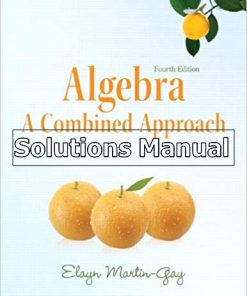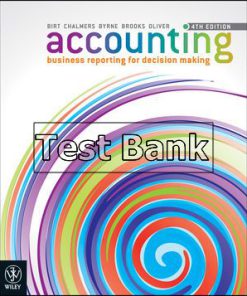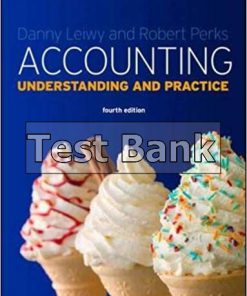Salvadoris Structure in Architecture The Building of Buildings 4th Edition Salvadori Solutions Manual
$26.50$50.00 (-47%)
Salvadoris Structure in Architecture The Building of Buildings 4th Edition Salvadori Solutions Manual.
You may also like
This is completed downloadable of Salvadoris Structure in Architecture The Building of Buildings 4th Edition Salvadori Solutions Manual

Product Details:
- ISBN-10 : 0132803208
- ISBN-13 : 978-0132803205
- Author: Robert A. Heller, Deborah J. Oakley
An excellent text as a first introduction to structures geared toward architecture students, or as a companion for more traditional engineering / math-based courses including statics and strength of materials or structural principles.
This conceptual, non-mathematical, yet technical look at the principles of structural mechanics, and the physical properties of building elements makes structural mechanics for architecture accessible to all.
Continuing Dr. Salvadori’s passion for education and an accessible non-mathematical presentation of structural mechanics, Salvadori’s Structure in Architecture: The Building of Buildings, 4/e is a must-have for students of architecture and building construction, structural engineers, and all those with an interest in architecture. It has been revised and expanded to include over 500 new illustrations, 150 new photos, and new materials covering the changes in technology and construction techniques developed during the last 50 years. Now presented in three manageable sections covering the fundamental concepts (Section 1), structural forms (Section 2), and topics beyond the basics (Section 3), it provides expanded content and graphics on critical topics such as beam behavior, moment of inertia, redundancy and much more!
Table of Content:
- Part I Fundamental Concepts
- Chapter One Structure in Architecture
- 1.1 What is Structure?
- 1.2 Structure in Nature
- 1.3 The Architect and the Engineer
- 1.4 Historical Development
- 1.5 The Present Interest in Architecture
- 1.6 Structures and Intuition
- Key Ideas Developed in This Chapter
- Questions and Exercises
- Further Reading
- Chapter Two Building Loads and Codes
- 2.1 The Purpose of Structure
- 2.2 Building Loads and Codes
- 2.3 Dead Loads
- 2.4 Live, Snow, and Wind Loads
- 2.5 Thermal and Settlement Loads
- 2.6 Dynamic Loads
- Key Ideas Developed in This chapter
- Questions and Exercises
- Further Reading
- Chapter Three Structural Materials
- 3.1 The Essential Properties of Structural Materials
- 3.2 Material Constants and Safety Factors
- 3.3 Modern Structural Materials
- Key Ideas Developed in This Chapter
- Questions and Exercises
- Further Reading
- Chapter Four Structural Requirements
- 4.1 Basic Requirements
- 4.2 Equilibrium
- 4.2.1 Linear Equilibrium
- 4.2.2 Rotational Equilibrium
- 4.3 Stability
- 4.4 Strength
- 4.5 Functionality
- 4.6 Economy
- 4.7 Aesthetics
- 4.8 Optimal Structures
- Key Ideas Developed in This Chapter
- Questions and Exercises
- Further Reading
- Chapter Five Basic States of Stress
- 5.1 Introduction
- 5.2 Simple Tension
- 5.3 Simple Compression
- 5.3.1 Buckling
- 5.4 Simple Shear
- 5.4.1 Torsion
- 5.5 Simple Bending
- Key Ideas Developed in This Chapter
- Questions and Exercises
- Further Reading
- Part II Structural Forms
- Chapter Six Tension and Compression Structures
- 6.1 Cables
- 6.2 Cable Roofs
- 6.3 Trusses
- 6.4 Funicular Arches
- Key Ideas Developed in This Chapter
- Questions and Exercises
- Further Reading
- Chapter Seven Beams
- Introduction
- 7.1 Cantilevered Beams
- 7.1.1 Basic Observations
- 7.1.2 The Effect of Beam Shape on Bending
- 7.1.3 Lateral-Torsional Buckling
- 7.1.4 Shear
- 7.2 Simply Supported Beams
- 7.2.1 Cantilever Beam Analogy
- 7.2.2 Effects of Loading
- 7.3 Fixed Beams and Continuous Beams
- 7.4 Secondary Bending Stresses
- Key Ideas Developed in This Chapter
- Questions and Exercises
- Further Reading
- Chapter Eight Frames and Arches
- 8.1 Post and Lintel
- 8.2 The Simple Frame
- 8.2.1 Lateral Frame Behavior
- 8.3 Multiple Frames
- 8.4 Gabled Frames and Arches
- 8.5 Arched Roofs
- Key Ideas Developed in This Chapter
- Questions and Exercises
- Further Reading
- Chapter Nine Some Fine Points of Structural Behavior
- 9.1 How Simple Is Simple Stress?
- 9.2 The Largest Stress
- 9.3 The Importance of Plastic Flow
- Key Ideas Developed in This Chapter
- Questions and Exercises
- Further Reading
- Part III Beyond the Basics
- Chapter Ten Grids, Plates, Folded Plates, and Space-Frames
- 10.1 Load Transfer in Two Directions
- 10.2 Rectangular Beam Grids
- 10.3 Skew Grids
- 10.4 Plate Action
- 10.5 Plate Structures
- 10.6 Ribbed Plates
- 10.7 Strength Reserve in Plates
- 10.8 Folded Plates
- 10.9 Space Frames
- Key Ideas Developed in This Chapter
- Questions and Exercises
- Further Reading
- Chapter Eleven Membranes
- 11.1 Membrane Action
- 11.2 Principal Curvatures and Principal Membrane Stresses
- 11.3 Tents and Balloons
- Key Ideas developed in This Chapter
- Questions and Exercises
- Further Reading
- Chapter Twelve Thin Shells and Reticulated Domes
- 12.1 Form-Resistant Structures
- 12.2 Curvatures
- 12.3 Rotational Surfaces
- 12.4 Translational Surfaces
- 12.5 Ruled Surfaces
- 12.6 Complex Surfaces
- 12.7 Membrane Action in Circular Domes
- 12.8 Bending Stresses in Domes
- 12.9 Membrane Action in Cylinders
- 12.10 Bending Stresses in Cylinders
- 12.11 Stresses in Synclastic Translational Shells
- 12.12 Saddle-Shell Action
- 12.13 Stresses in Scalloped and Other Types of Shells
- 12.14 Thin-Shell Formwork
- 12.15 Reticulated Domes
- Key Ideas Developed in This Chapter
- Questions and Exercises
- Further Reading
- Chapter Thirteen Structural Failures
- 13.1 Historical Failures
- 13.2 Main Causes of Structural Failure
- 13.3 Faults in Structural Design
- 13.3.1 Sources
- 13.3.2 Computational Errors
- 13.3.3 Building Codes
- 13.3.4 Dynamic Loads: Wind and Seismic Forces
- 13.3.5 Thermal Movements and Stress
- 13.3.6 Foundations
- 13.3.7 Structural Redundancy
- 13.3.8 Buckling and Redundancy
- 13.3.9 Connections
- 13.3.10 Unexpected Loads
- 13.3.11 Ponding
- 13.3.12 Other Causes of Failure
- 13.4 Faults in Coordination and Supervision
- 13.5 Faults in Materials
- 13.5.1 Steel
- 13.5.2 Concrete
- 13.5.3 New Materials and Methods of Load Estimation
- 13.5.4 Fatigue Failures
- 13.6 Consequences of Structural Failures
- Key Ideas developed in This Chapter
- Questions and Exercises
- Further Reading
- Chapter Fourteen Structural Aesthetics
- 14.1 Aesthetics and Structures
- 14.2 Semiotic Messages
- 14.3 Origins of the Structural Message
- 14.4 Scale and the Structural Message
- 14.5 Aesthetics and Structural “Correctness”
- 14.6 The Message of Structure
- Key Ideas Developed in This Chapter
- Questions and Exercises
- Further Reading
- Chapter Fifteen Conclusion: Understanding of Structural Principles
- 15.1 Intuition and Knowledge
- 15.2 Qualitative and Quantitative Knowledge
- 15.3 The Future of Architectural Structures
- Key Ideas Developed in This Chapter
- Structures Bibliography
- Index
- A
- B
- C
- D
- E
- F
- G
- H
- I
- J
- K
- L
- M
- N
- O
- P
- Q
- R
- S
- T
- U
- V
- W
- Z
People Also Search:
salvadoris structure in architecture the building of buildings salvadori
salvadoris structure in architecture the building of buildings 4th edition salvadori
salvadoris structure in architecture the building of buildings
salvadoris structure in architecture the building of buildings 4th edition download scribd
salvadoris structure in architecture the building of buildings 4th edition solution manual download pdf
salvadoris structure in architecture the building of buildings 4th edition












